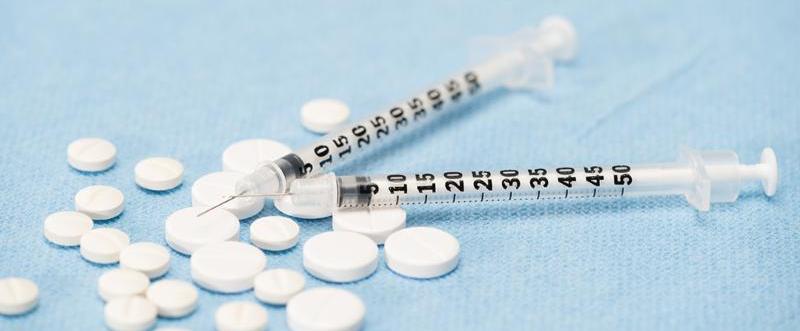| |
 |
October/November: The Leaves of Life!
Many of us find October a metaphor for the circle of life. Leaves blaze their brilliant colors and then fall withered to the ground. The metaphor of October was made all the more poignant by the recent tragic
murder of eleven synagogue worshipers in Pittsburg by a hateful, malevolent, demon. One of my
PENN MED classmates,
Jerry Rabinowitz MD, was among them--such an unspeakable loss to my profession and the society he served so well, Jewish and non-Jewish.
On the cover of the October 30
Star Ledger there is a photo of Jewish young women singing in honor of their fallen brothers and sisters, symbolized by 11
Stars of David. Amazingly, each Star of David was supported by a cross!! This photo symbolizes, better than words ever could, the strong bond between the
Jewish and
Christian faiths and reminds us how important it is that we support each other through tragedy and how keenly we feel each other's losses! Stars of David and crosses similarly stand together marking the graves of the Jewish and Christian veterans who perished during the
Normandy Invasion and now rest together in the
Normandy American Cemetery.
I will go further. As I am tired of the attacks on refugees, children of refugees, and immigrants striving to be free, I have found no faith group more eloquent on this topic than our Jewish friends. Perhaps because they have been victimized for so many centuries. Perhaps because of their biblical faith, they understand better than the rest of us the importance of embracing the stranger and foreigner. We need to embrace their values, as our own, and join forces to make sure that our nation continues to be the home of the free and those struggling to be free!! For them, I give thanks this Thanksgiving!
John A. Schmidt, MD
Internist
|
 |
Cell-free DNA: The Next Major Breakthrough in the Diagnosis and Treatment of Cancer?
As described in the November 1 issue of the
New England Journal of Medicine,
tumor cells shed
DNA into body fluids including
plasma and feces. The current approach of
biopsying tumors directly has several disadvantages. First, some tumors, such as those in the brain and spinal cord, are difficult to biopsy safely. Another important problem is sample error. This means that the tiny biopsy may not be representative of the whole tumor. This can be especially important when the tumor is heterogeneous or when there are multiple
metastases. Different metastases often give different DNA profiles. Finally, it is impractical to biopsy a tumor more than once. Performing a "
liquid biopsy" however, by examining the tumor's DNA found in plasma and other body fluids, potentially overcomes these difficulties. Plasma and feces can be easily and safely obtained by drawing blood or collecting a bowel movement. Because tumors are typically very
vascular and "leaky," the DNA from the entire tumor will seep into the blood or stool thereby eliminating the error resulting from blindly examining the proverbial elephant. Plasma and stool can also be collected consecutively from the same patient to look for changes in DNA profiles in response to surgery, radiation, or chemotherapy. The authors believe this will be the most important application of
cell-free DNA in the next few years. For example, we physicians often worry that surgical removal of, for example, a
breast cancer, may not have been curative. We therefore recommend toxic
"adjuvant" treatments to increase the likelihood of eradicating microscopic tumor implants too small to be detected by our current
imaging technologies. But what if the doctor could sample the same patient's plasma and show that the tumor DNA that was present before surgery was completely eliminated? In this way, patients who were truly cured by surgery could be spared
toxic radiation and chemotherapy whereas those with residual tumor DNA could be treated more aggressively and accurately. Patients could be tested quarterly for recurrence and, if positive, treated long before the recurrent tumors were large enough to be detected by
PET imaging.
Tumor antigens, such as
CA 125 for
ovarian cancer, are already used in this way but most tumors do not produce reliable antigens.
Cell-free stool DNA is the basis for the
Cologuard® test that I recommend to some of my patients as a screening test for
colon cancer. The test is
FDA approved for patients over the age of 50 without a personal history of
polyps or family history of colon cancer. The test is safe, specific, and sensitive. Unfortunately, some private insurance plans would prefer to pay for a
colonoscopy. In any event, Cologuard® is the first case where cell-free DNA has had a major impact on clinical practice.
Patient's often ask me, "Is there a blood test for cancer." The current answer is no, with the possible exception of
serum PSA for
prostate cancer. Will cell-free DNA finally give us a universal and simple blood test to detect cancers? Here the authors are cautious because the test would have to have a very, very low false positive rate. Imagine the angst of a false positive test and the cost of the follow-up studies that would be required. Therefore, this very promising technology will most likely find its greatest utility in patients already suspected of having a tumor, allowing oncologists to individualize care to maximize benefit and minimize harm.
|
 |
Aspirin in Primary Prevention Part Three: No Match for Statins!
Now comes an interesting editorial published in the October 18 issue of the
New England Journal of Medicine comparing the value of low dose aspirin to
statins. The author says, "...the results of these aspirin trials, which showed minimal benefits and consistent bleeding risks, should be considered alongside the results of contemporary statin trials. In primary prevention trials (in patients with risk factors but no demonstrable cardiovascular disease), the use of statins was associated with a 25% decrease in the risk of major vascular events for every 1 mmol per liter (~40 mg/dL) decrease in
low-density lipoprotein (LDL) cholesterol level. This statistically certain benefit was associated with an enviable safety profile and was not associated with the bleeding complications seen with aspirin." There you have it. Statins win again.
|
Prevention of Fractures in Women 65 Years and Older with Osteopenia
Everyone loses
bone mass with age, men and women alike.
Bone density is measured in the spine and hip using a simple low-dose Xray test called
DEXA.
Osteoporosis is defined as bone density in either location that is 2.5 standard deviations less than the bone density of 18 year olds. This is expressed as a "
T-score." Women and men with a T-score of -2.5 or worse are recommended to take a
bisphosphonate (e.g.,
alendronate (
Fosamax®),
risedronate (
Actonel®), or
zoledronic acid
(
Reclast®) to prevent hip and spine fractures. This approach, proven in numerous
controlled randomized trials (CRTs), misses the point that most fractures occur in women with
osteopenia, that is, in women with T-scores between -1.0 and - 2.5. You might therefore ask, "Why wait until the T-score is -2.5 to treat?". The answer is that the famous
Fracture Intervention Trial conducted by
Merck with alendronate (Fosamax®) only showed benefit in those with a T-score of -2.5 or worse.
Now comes a new study, and
accompanying editorial, published online in the October 1 issue of the
New England Journal of Medicine, that is about to change this paradigm. The study showed that women 65 and older, with T-scores in the
osteopenic range (-1.0 to -2.5), had one third fewer hip and spine fractures and maintained stature, if they received zoledronic acid (Reclast®) intravenously every 18 months for four doses over a six year period. The number of women needed to treat (NNT) to prevent one fracture was 15. The study is important because it shows that senior women in the osteopenic category, especially those who are at increased risk of fracture (as measured by the
FRAX calculator), shouldn't wait for osteoporosis to begin treatment with zoledronic acid. Though the study was not designed to test for complications, no serious complications, including osteonecrosis of the jaw and atypical fracture of the
femur, were observed.
Zoledronic acid, which must be given intravenously, is the most potent of the bisphosphonate drugs. It is convenient and safe. Whether insurance companies will pay for treatment of osteopenic women remains to be seen.
|
 |
|
Other Noteworthy News Items
|
Our sixth grandchild, a beautiful little girl weighing 8 lbs and 10 ounces, has arrived, hale and hearty!! And our oldest daughter, a practicing physician oncologist, is well and now the mother of three beauties!!
Valerie, Ms. Clark, Ms. Catong, and I wish you a wonderful Thanksgiving!
|
|
| |
|
|
Board Certified Internist
Dr. Schmidt is one of the leading internists in Monmouth County offering
Medical Home
services.
He is an attending physician at Jersey Shore University Medical Center.
Dr. Schmidt is enrolled in the Maintenance of Certification Program of the American Board of Internal Medicine
Feel free to share this newsletter with your family and friends.
Register to receive our monthly newsletter
today!
Click here to learn more about the benefits of our
Follow My Health Patient Portal
and register today! You can make appointments and get your lab results on the portal. Simply ask Valerie to send you an invitation. Call 732-282-8166.
Mankind, East and West, Christian and Muslim, accepted the Jewish conviction that there is only one God. Today it is polytheism that is so difficult to understand, that is so unthinkable."
|
|